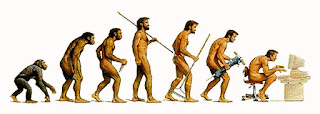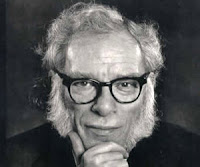What is a Motor?
A motor is a a machine. It is powered by electricity or internal combustion that supplies power for a vehicle or other devices with moving parts.
History of Motors:
"Motos find the most practical use in our every day life in form of modern gadgets, devices, and appliances." From the first discovery t today, we have progressed into developing advanced and useful motors that aid us in our every day lives.
 |
| Michael Faraday |
- Early 1800s: the basic principles of electromagnetic induction was discovered by Oersted,
Gauss and Faraday.
Hans Christian Oersted - 1800: the invention of the battery by Alessandro Volta
- 1820: the invention of a magnetic field from electric current by Hans Christian Oersted and Andre Ampere. This lead to the invention the the basic DC motor.
- 1821: Michael Faraday set out to prove the theory proposed by Oersted and Ampere. He did this by converting electric energy into motion
- 1822: the invention of the first rotating device driven by electromagnetism was built by Peter Barlow
- 1825: the invention of the electromagnet by William Sturgeon
- 1832: The invention of the commutator by William Ritchie and Hippolyte Pixii.
- 1833: Friedrich Emil Lenz published an article on the law of reciprocity of magneto-electric and electromagnetic phenomena.
- 1834: Thomas Davenport constructed the first real DC electric motor. It was powerful enough to preform certain tasks. His motors were able to preform tasks like moving a trolley on circular tracks. Later on, it turned out that the trolley was the first important application of electric power. Also in May, Moritz Jacobi created the first real rotating electric motor. It set a world record which was improved by him self 4 years later in 1838.

Jacobi's motor - 1835: 2 Dutchmen created an electric motor that was able to power a small car.
- 1837: In 1837, the first patent was granted to Thomas Davenport.
- 1838: Jacobi's second motor created was powerful enough to drive a boat full of people across a river. Also, Friedrich Emil Lenz proved a detailed description of his experiments with the generator used to operate his motor.
- 1839/40: Scientist all over the world managed to recreate his motor as well as create ones with a higher power.
- 1850: Thomas Davenport's death. 30 after his death, full sized electric trolleys were built.
- 1856: the invention of the Double-T-anchor by Werner Siemens.
- 1872: the invention of the drum armature by Friedrich Hefner-Alteneck.
- 1873: the electric motor achieved commercial success
- 1880: trolleys and their power systems were very expensive to build and transport people.
- 1885-1889: the invention of the 3-phase electric power system. That is the basis of the electrical power transmission and advanced electric motors today. This motor is most commonly used in highly dynamic applications such as robots or electric cars
How Motors Work:
"The core function of an electric motor is to convert electrical current into mechanical force."
DIfferent motors work differently but they all work off of the power of the electromagnetic field. There are main types of motors. AC and DC motors. On electric motors, there are parts that all it to function. For example, a rotor or stator. Motors use electromagnetic fields to generate motion. Electric motors function of the principle of magnetism which is alike poles repel and opposite poles attract. Magnets are the base of many motors.
AC Motors:
AC motors use a secondary and primary magnet. The primary winding is connected directly to a power source like a generator or power grid. The secondary magnet receives energy from the primary without directly touching it. These motors have the advantage of auto-change of polarity due to alternating current. It runs at the frequency of the sine wave. The most common of these motors are induction type. Unlike the DC motor, no current passes through the armature coils. The current gets induced through rotation coils instead of them being supplied directly. A typical motor consists of parts. The first one is an exterior stationary stator with coils that use AC current to produce a revolving magnetic field. The second one is an interior rotor linked to the output shaft that employs torque using the rotating field.
DC Motors:
DC motors were not created from the motors that were made in the 19th century. Rather from eh development of power generators. DC motors the the oldest form of electric motors. Today, they have a dominant market position in the lower power and low voltage. They are powered through a direct current. DC motors have a fixed magnet on the outside. On the inside is an armature that carries current. "As soon as the current passes through the wired armature, it turns into an electromagnet with opposite polarity as of the girls magnet." This cause the armature to continuously rotate. A armature is usually nothing more but a good conductor with copper wire on it. With every half rotation of these motors, the electromagnet gets stuck at the opposite poles and they attract to each other. To get past it, the current needs to be flipped. To do this, a commuter and brushes are used. The commutator allows for the motor to change the direction of the current. It is attached to the armature. Like the motors we built, the brushes rest against the commutator. "The key is that as soon as the armature passes over the maximum flux of the field magnet, the poles of the electromagnet must flip. Because of the flip, the North Pole of the electromagnet is always in line with the North Pole of the field magnet that keeps the armature under constant repulsion."
Disadvantages of DC Motors:
Disadvantages of DC Motors:
- The brushes wear. Because the brushes are constantly connecting to the commutator, it begins to wear. When that happens, it will increase in low pressure environment. Also, the sparks from the brushes can be hazardous. This is a rare occasion but the sparks from the brushes may cause an explosion if the environment that motor is in is susceptible to it.
Types of Electric Motors:
- Stepper Motors:
- it is an electro-mechanical device that converts electrical current into torque output. It rotates a number of degrees with each electric pulse. It is also measured in degrees.
- Brushed DC Motors:
- it has a permanent magnetic field that is produced in the stator.
- Brushless DC Motors:
- it has similar operations as the DC motor. The role of the rotor and stator are inverted in the brushless motor. There are no brushes and the function of the commutator takes place by an electronic circuit.
- Linear Motor:
- it is an electric motor that consists of an unrolled stator. It produces linear force instead of torque like the other motors.
- Servo Motor:
- it is a very small motor with one main function. It select if it wants vertical or horizontal polarization. It is usually used for motion controls. It also uses a special current to make them rotate electrically.

Bibliography:
http://engineering.mit.edu/ask/what’s-difference-between-motor-and-engine
http://www.ece.uah.edu/courses/material/EE410-Wms2/Electric%20motors.pdf
http://www.edisontechcenter.org/electricmotors.html
https://www.eti.kit.edu/english/1376.php
http://www.solarbotics.net/starting/200111_dcmotor/200111_dcmotor.html
http://www.solarbotics.net/starting/200111_dcmotor/200111_dcmotor3.html
http://www.howmotorswork.com/history.html
http://www.howmotorswork.com/type_of_motor.html
http://www.electrical4u.com/electrical-motor-types-classification-and-history-of-motor/
http://www.electrical4u.com/electrical-motor-types-classification-and-history-of-motor/






























































